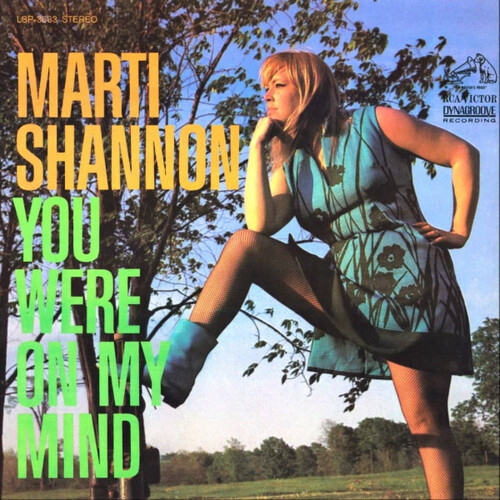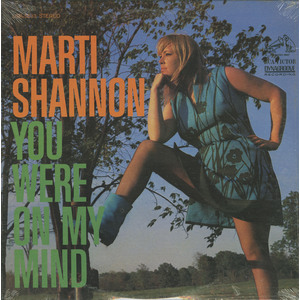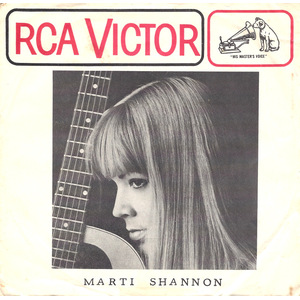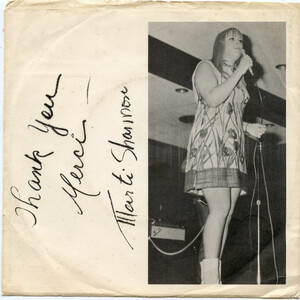Shannon, Marti
Websites:
No
Origin:
Washington, D.C., 🇺🇸 → Saskatoon, Saskatchewan, 🇨🇦
Biography:
“The Six Foot Sound” — from Washington, D.C. to Saskatoon to RCA Victor
Marti Shannon was a commanding vocal talent of the mid-1960s, introduced by RCA Victor as “The Six Foot Sound.” Born in Washington, D.C. and raised in Saskatoon, Saskatchewan, Shannon blended North American polish with prairie-bred strength, becoming one of Canada’s most promising pop artists of the decade.
Her breakthrough came in 1966 when RCA Victor launched a major promotional campaign around her debut single and LP. Her first 45, “Don’t Cry For Me, Babe” b/w “Is He Gonna Love Me”, was recorded April 19, 1966, at RCA Victor Recording Studios in Nashville. With orchestration by Ben McPeek and production by Wilf Gillmeister, the single introduced Shannon as a serious contender in the folk-pop scene. The A-side, written by Shannon herself, offered an emotionally gripping performance that was both contemporary and timeless.
The release was promoted with striking bilingual picture sleeves and the tagline:
“Introducing... the Six Foot Sound.”
RPM Weekly echoed the excitement in its August 15, 1966 issue, praising her potential:
“Marti’s superb understanding of the mood and feeling of the material—which the statuesque blonde writes as well as sings—is superb and will leave the listener breathless.”
That same week, RCA hosted a launch party at Calgary’s Palliser Hotel.
“Marti Shannon launched in style,” wrote RPM.
“She thrilled the guests with her fabulous appearance and vibrant voice.”
Her second single, “There’s Lovin’ to Do” b/w “On Your Way”, arranged by Jimmy Wisner, followed shortly after. RPM spotlighted the release multiple times, including its October 10, 1966 edition:
“Canada’s own Marti Shannon is on the singles scene... Her husky-voiced reading should garner spins and fans aplenty... We think this effort is fantastic!”
Meanwhile, RCA released her self-titled LP, Marti Shannon, a lush orchestral album that showcased her vocal versatility. In February 1967, the album was featured in RPM’s Top Canadian Albums round-up:
“This album, with its good taste and thoughtful interpretation, is sure to gain her a loyal following.”
Later that month, Shannon ranked #3 in RPM’s 6th Annual Awards Poll for Most Promising Female Vocalist—behind Lynda Layne and Mary Lou Collins, but ahead of Debbie Lori Kaye and Dianne Leigh. She remained on the radar into March, ranking #5 in a follow-up list of promising female artists.
Although her commercial discography was brief—three Canadian singles and one LP, plus a French RCA EP featuring “This Little Bird,” “Time Will Tell,” “Whose Little Boy Are You,” and “Don’t Cry For Me, Babe”—Marti Shannon left a lasting impression. A distinctive blend of emotional phrasing, commanding stage presence, and songwriting skill helped her stand out during a crucial era for Canadian pop.
Whether as a singer-songwriter or interpreter, Shannon’s recordings remain a compelling snapshot of mid-60s ambition and style. Her short but powerful body of work still resonates with collectors, radio historians, and fans of Canada's golden pop era.
-Robert Williston






